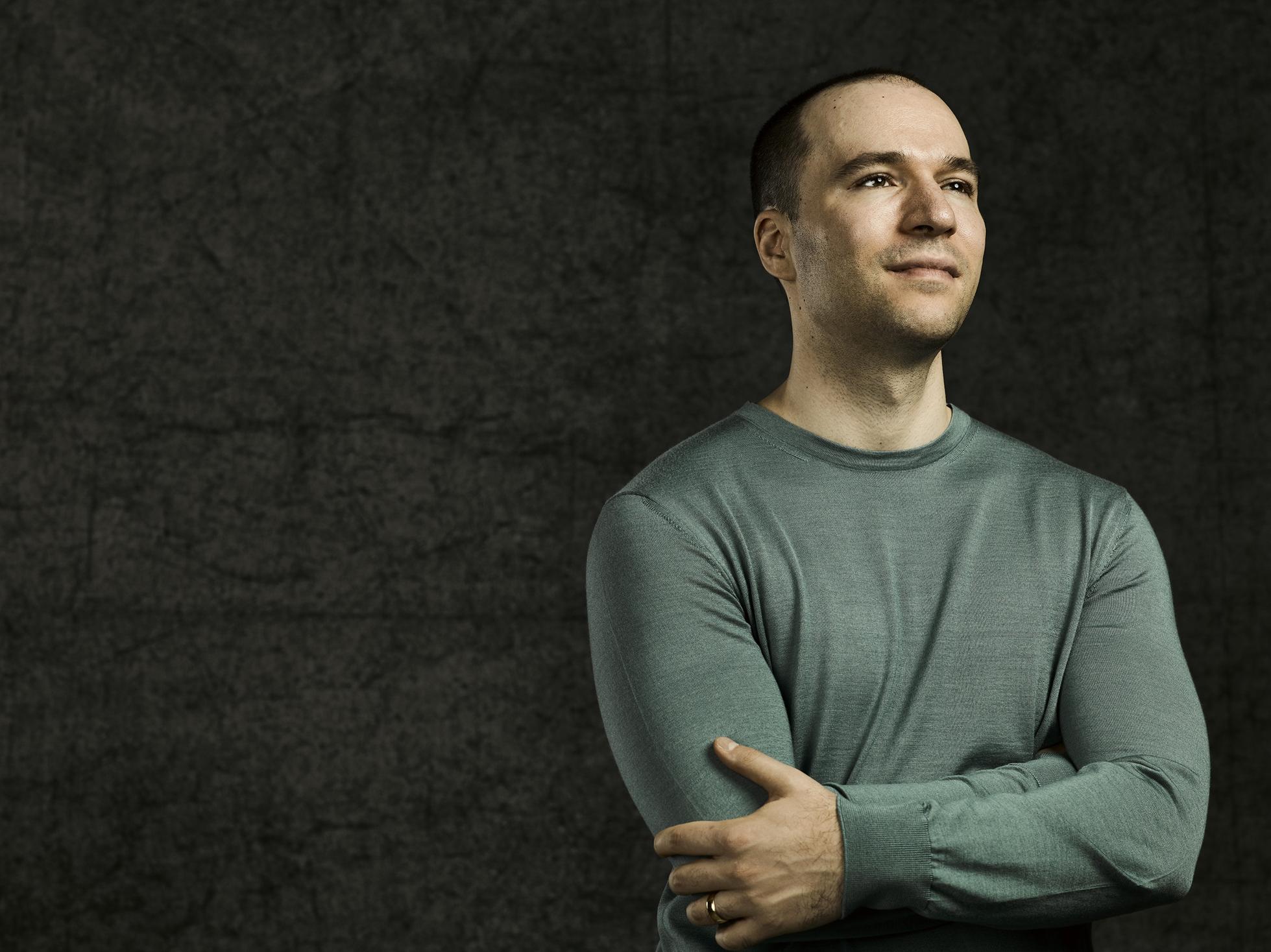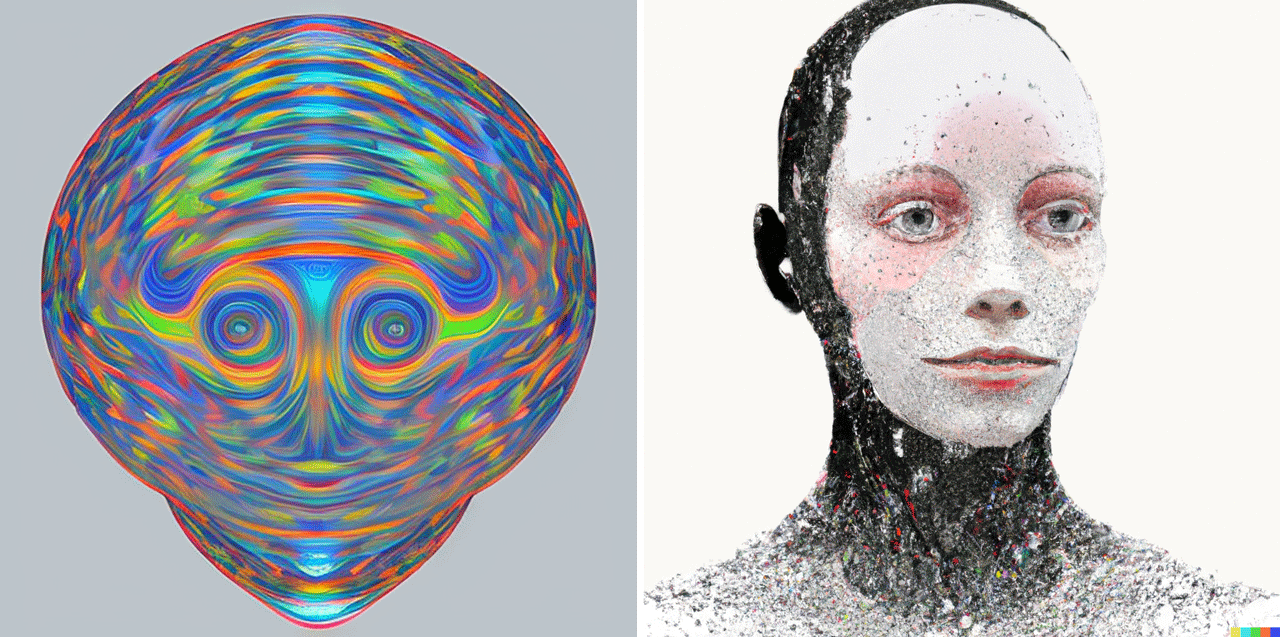Today’s AI-based image generators aren’t self-aware. But Forbes asked Stability AI’s Stable Diffusion and OpenAI’s DALL-E—to attempt to visualize themselves, using an identical prompt: “an artistic portrait of the artificial intelligence called X, created by the artificial intelligence X.” These were the authors’ favorites of the resulting self-portrait attempts. DreamStudio/DALL-E
Artificial intelligence will be 2023’s hottest topic, and one subject to debate. That’s what Microsoft cofounder Bill Gates told Forbes in an exclusive conversation about the suddenly exploding field. More than 60 other AI leaders Forbes interviewed share his anticipation: After decades of research and demonstrative stunts like Deep Blue’s victory over chess grandmaster Garry Kasparov, the shift to artificial intelligence is finally here.
Perhaps nothing indicates this better than OpenAI and its conversational robot, ChatGPT. Forbes estimates that it’s already exceeded 5 million users in less than 60 days from launch. Its usage has become rampant in schools—prompting New York City to ban it on public school computers—and it’s got enough smarts already to get a “B” grade on a final exam at Wharton. Soon, it will be deployed in Microsoft’s Office software suite and tons of other business applications. But OpenAI nearly shelved ChatGPT’s release entirely, its leaders, CEO Sam Altman and president Greg Brockman, told Forbes in rare interviews.
Then, there’s Stability AI’s open-source image generation model Stable Diffusion, which has been used on pop music videos, Hollywood movies and by more than 10 million people on a daily basis. Stability’s brash CEO Emad Mostaque predicts the “dot-AI bubble” is coming. If OpenAI (recently valued at $29 billion) and Stability ($1 billion, off virtually no revenue) are any indication, it’s already begun. While the experts Forbes spoke to have different views on how the market will play out, one thing is for sure: soon, AI will be affecting the way that you work, like it or not.
Here are six things you probably didn’t know about ChatGPT, Stable Diffusion and the future of generative AI. For more, read Forbes’ new magazine feature on the dawn of the work-ready AI era .
1. Big Tech’s last generation of billionaire founders are back in the trenches
Bill Gates is excited about AI, and is now spending 10% of his time back at Microsoft meeting with product teams, he said. He’s not alone: At Google, CEO Sundar Pichai reportedly enacted a “code red” emergency, reorienting the company’s work to focus on ways to counteract ChatGPT and similar tools. In turn, hermetic founders Larry Page and Sergey Brin are back. Forbes broke the news that Brin filed a code request on LaMDA, Google’s natural language chatbot, in January—his first in years.
2. ChatGPT almost wasn’t released
Despite its viral success, ChatGPT did not impress employees inside OpenAI. “None of us were that enamored by it,” Brockman told Forbes . “None of us were like, ‘This is really useful.’” This past fall, Altman and company decided to shelve the chatbot to concentrate on domain-focused alternatives instead. But in November, after those alternatives failed to catch on internally—and as tools like Stable Diffusion caused the AI ecosystem to explode—OpenAI reversed course. “It really lit a fire under OpenAI,” said Sequoia investor Pat Grady, whose firm bought shares in OpenAI in 2021.

Greg Brockman, OpenAI’s cofounder and president, said that before ChatGPT’s launch, he thought the company would be lucky to get “one Twitter thread of 10,000 likes.” Its Discord channel alone gained 2 million members in two months instead. Copyright © 2022 Ethan Pines
3. ChatGPT forced OpenAI to delay development on GPT-4
Internally, ChatGPT’s virality has been a double-edged sword. Its instant popularity—more than 1 million users in its first five days—overloaded the company’s servers. In the holiday rush, OpenAI employees had to shift computing from its training supercomputer, used to train new models like the highly anticipated GPT-4, to helping run ChatGPT. Stay tuned for follow-up stories that may include an early warning of when GPT-4 is now expected to launch. One thing to know now: According to billionaire Reid Hoffman, who donated to OpenAI’s nonprofit early on, it’s developed a sense of humor.
4. Stability’s Faustian bargain
Mostaque has positioned his company Stability as the AI company for the people—building the technology in a fashion unlike what he calls the “panopticon” approach of Big Tech. But he’s quietly struck his own arrangement with a tech giant: an “incredibly attractive deal” with Amazon, which has so far remained a dark horse in the race for AI. The cloud giant provided Stability with more than 4,000 Nvidia GPUs to power Stability’s supercomputer, one of the world’s largest, on which Stable Diffusion was subsequently trained. That’s a lot of computing power. A year ago, Stability operated just 32 such GPUs, Mostaque said.
5. ‘Money laundering’ in the cloud
Beneath all this flashy new technology lies a bed of lucrative computing infrastructure used to build all the apps. The costs are getting unwieldy—as indicated by OpenAI’s reported $10 billion investment commitment from Microsoft, much of which is expected to be spent on computing costs associated with Microsoft’s cloud service Azure. (Microsoft and OpenAI have called it a “multiyear, multi-billion” deal.) “There is a lack of transparency,” said Clem Delangue, CEO of Hugging Face, which hosts AI models like Stable Diffusion and was recently valued at $2 billion. “It leads to situations where we lose track of the real cloud infrastructure cost of a lot of machine learning.” Some of these costs appear to be proliferating unchecked—so much so that Delangue coined his own term for it: “cloud money laundering.”
6. AI’s end game?
“Artificial general intelligence,” or AGI, is a term for an as-yet hypothetical AI that is conscious, self-improving and theoretically capable of outsripping human control (a prospect that has concerned some, like Elon Musk, an initial donor to OpenAI who has since cut ties with the company). Sam Altman believes we likely won’t recognize an AGI when it arrives. This endgame is why OpenAI has two unusual setups for a startup unicorn: a capped-profit mechanism by which, after returning a certain amount of profits to shareholders, it would return to nonprofit control; and a merge condition by which, should a competitor get close to reaching an AGI, OpenAI would shut down its own work and fold into the more successful project. Altman also thinks that when an AGI comes—for there could be several—it might break capitalism for the better.
